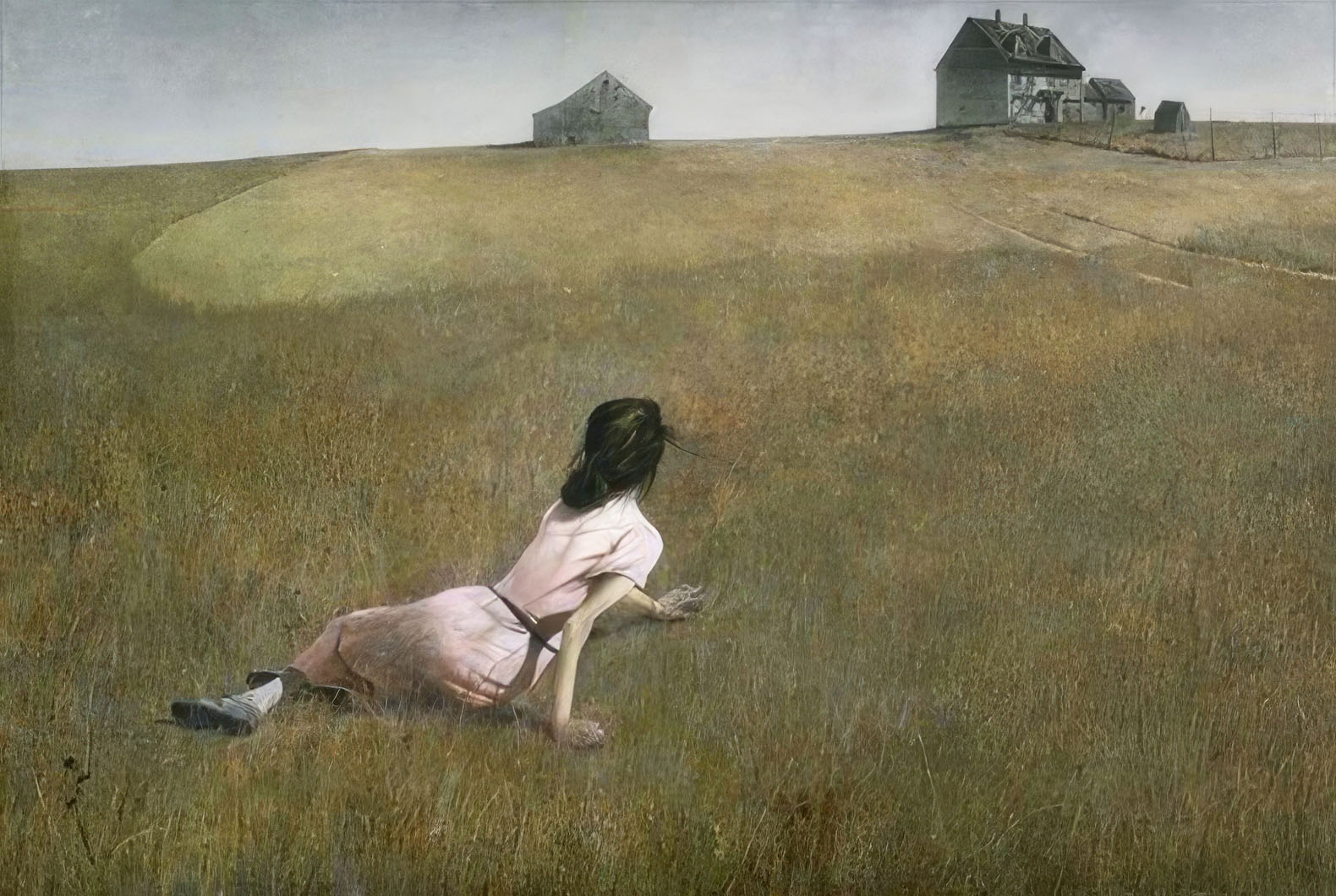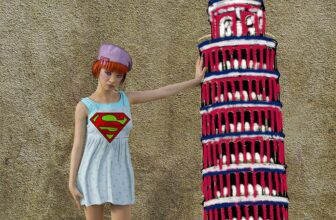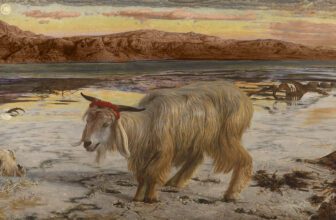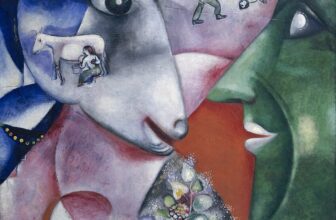
What is the meaning behind Christina’s world?
Andrew Wyeth’s Christina’s World is one of the most iconic and enigmatic paintings of the 20th century. Painted in 1948, it depicts a young woman lying in a vast field of grass, her back turned to the viewer, as she gazes longingly at a distant farmhouse. With its haunting atmosphere and extraordinary attention to detail, the painting invites viewers to explore themes of longing, resilience, and human connection to place. But what does this image truly mean, and why is the central figure, Christina, crawling in the grass?
To unravel the layers of this masterpiece, we must delve into the story behind the painting, the life of the artist, the identity of Christina, and the symbolic elements Wyeth infused into the work.
The Artist: Andrew Wyeth’s Vision and Style
Andrew Wyeth (1917–2009) was an American realist painter, often associated with the mid-20th-century movement of Regionalism. Known for his meticulous attention to detail, Wyeth had a deep connection to the landscapes of rural Pennsylvania and Maine, where he spent much of his life. His paintings often depicted quiet, introspective scenes that were imbued with emotional depth.
Wyeth’s work is sometimes described as nostalgic or melancholic, capturing the passing of time and the intimate connection between people and their environments. He had an uncanny ability to elevate ordinary moments into something profound, using subtle details and textures to create a sense of immediacy and intimacy. In Christina’s World, Wyeth combined his technical skill with his sensitivity to human emotion to create an image that resonates deeply with viewers.
The Subject: Christina Olson’s Story
The figure in the painting is Christina Olson, a real person who lived near Wyeth’s summer home in Cushing, Maine. Christina was a friend of the Wyeth family and became one of Andrew’s frequent models. She suffered from a debilitating neuromuscular disorder, likely Charcot-Marie-Tooth disease, which left her partially paralyzed. Despite her physical limitations, Christina was fiercely independent and determined to live life on her own terms.
Wyeth was struck by Christina’s resilience and strength. He saw her as a symbol of endurance in the face of hardship, and this admiration became the foundation for Christina’s World. The painting captures Christina’s spirit, showing her crawling through the grass toward her family’s farmhouse. While her physical struggle is evident, the image also conveys a sense of hope and determination.
The Scene: A Merging of Realism and Imagination
The setting of Christina’s World is the Olson family farm in Cushing, Maine. Wyeth spent many summers there, painting the surrounding landscape and becoming intimately familiar with its textures and contours. The farmhouse, barn, and fields depicted in the painting are rendered with remarkable precision, but Wyeth’s composition is not a mere reproduction of reality. Instead, he manipulated elements of the scene to create a more evocative and timeless image.
For instance, the field appears vast and endless, stretching far beyond the farmhouse and creating a sense of isolation. The grass is painted with painstaking detail, each blade contributing to the overall texture and atmosphere. The farmhouse, with its weathered walls and simple architecture, exudes a sense of history and permanence. These elements work together to create a scene that feels both specific and universal, grounded in the real world yet open to interpretation.
The Meaning: Longing, Isolation, and Resilience
At its core, Christina’s World is a meditation on the human condition. The painting explores themes of longing, isolation, and resilience, all of which are embodied in the figure of Christina and her relationship to the landscape.
Longing
Christina’s posture, reaching toward the farmhouse, suggests a deep sense of yearning. The house represents home, safety, and perhaps an unattainable ideal. For Christina, whose physical limitations made mobility difficult, the simple act of reaching the house was an immense challenge. This dynamic creates a poignant tension: the distance between Christina and the farmhouse is not great, but it is filled with obstacles that mirror the struggles she faced in her life.
This sense of longing resonates with viewers on a universal level. We all have our own “Christina’s World”, dreams, desires, and goals that feel just out of reach. Wyeth captures this universal experience with subtlety and grace, allowing the painting to speak to a broad audience.
Isolation
The vastness of the field and the emptiness of the landscape contribute to a sense of isolation. Christina is alone in this world, and her vulnerability is palpable. The painting’s composition emphasizes her smallness in relation to the expanse of the field, underscoring the challenges she faced as an individual with a disability in a rural environment.
At the same time, the painting’s isolation is not wholly negative. There is a sense of peace and stillness in the scene, suggesting that solitude can also be a source of strength and introspection. Wyeth’s portrayal of Christina celebrates her independence and her ability to find meaning and beauty in her surroundings, even in the face of adversity.
Resilience
Perhaps the most powerful theme of Christina’s World is resilience. Despite her physical limitations, Christina is determined to move forward. Her posture, with her head raised and her arms extended, conveys a sense of determination and defiance. She refuses to give up, even when the odds are stacked against her.
This resilience is mirrored in the landscape itself. The farmhouse and surrounding fields have endured decades of wear and tear, yet they remain steadfast. Wyeth’s attention to the textures of the grass, the weathered wood of the house, and the interplay of light and shadow creates a sense of timelessness, suggesting that both Christina and the land are part of something enduring and eternal.
Why Is Christina Crawling?
The image of Christina crawling through the grass is both literal and symbolic. On a literal level, it reflects her physical reality: due to her condition, Christina was unable to walk and often had to crawl to get around. Wyeth’s decision to depict her in this way is a testament to his honesty as an artist and his respect for Christina’s lived experience.
On a symbolic level, Christina’s crawling represents the universal struggle of human existence. Her movement through the grass can be seen as a metaphor for perseverance and the effort required to navigate life’s challenges. The act of crawling is both humbling and heroic, highlighting the vulnerability and strength that coexist within all of us.
Moreover, the image of Christina crawling invites viewers to consider their own relationship to the world around them. In an age of increasing detachment from nature, Christina’s World reminds us of the intimate connection between human beings and the earth. Christina’s posture—with her body close to the ground, emphasizes this connection, suggesting that our struggles and triumphs are inseparable from the landscapes we inhabit.
The Impact and Legacy of Christina’s World
Since its debut in 1948, Christina’s World has become one of the most celebrated and analyzed paintings in American art. It is housed in the Museum of Modern Art (MoMA) in New York City, where it continues to captivate audiences from around the world. The painting’s popularity can be attributed to its emotional resonance, technical brilliance, and ability to evoke a wide range of interpretations.
For some, Christina’s World is a celebration of resilience and the human spirit. For others, it is a poignant reminder of the challenges and limitations that define our lives. The painting’s ambiguity allows viewers to bring their own experiences and emotions to the work, making it a deeply personal and transformative experience.
Christina’s World by Andrew Wyeth is a masterpiece that transcends time and place. Through its intricate details, evocative composition, and profound themes, the painting captures the essence of human longing, resilience, and connection to the world around us. Christina’s crawling posture, both literal and symbolic, serves as a powerful reminder of the strength and determination that lie within us all.
By honoring Christina Olson’s story and the landscape she called home, Wyeth created an image that continues to inspire and move viewers more than seven decades after its creation. Christina’s World is not just a painting; it is a window into the complexities of the human spirit, a testament to the beauty and struggle of life itself.




